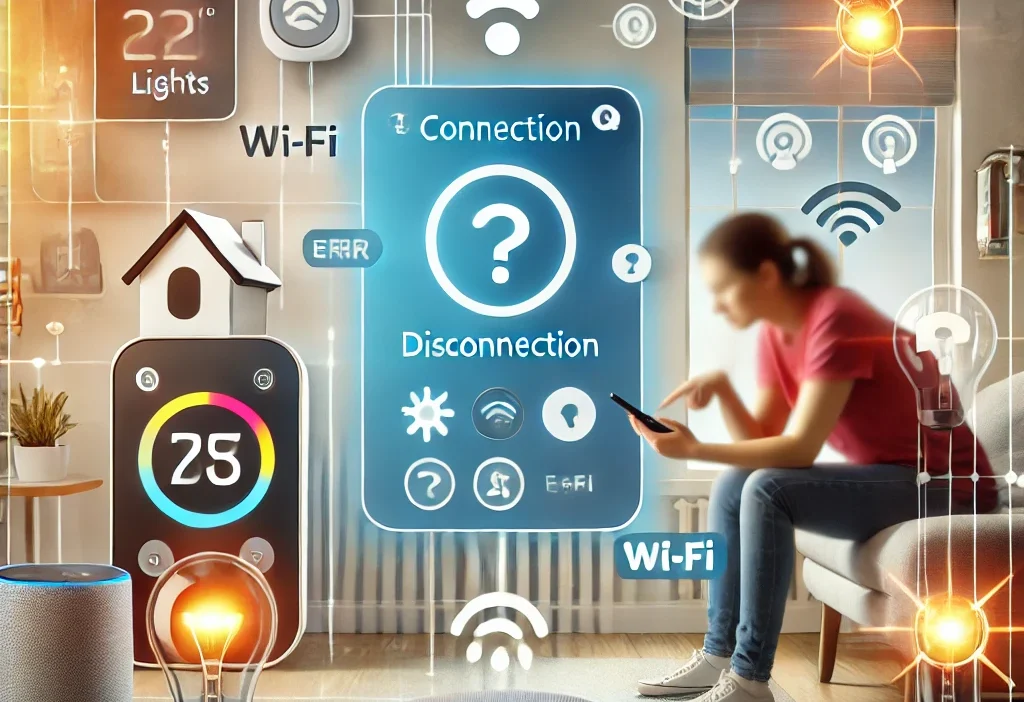As the digital heart of our homes continues to expand, the need for seamless connectivity among smart devices has become more crucial than ever. From smart thermostats and doorbells to voice assistants and lighting systems, ensuring that these technological marvels communicate effectively is paramount to achieving a truly smart home. Yet, even the most savvy of us can run into perplexing connectivity issues that disrupt this harmony. This article dives into common smart device connectivity problems and delivers practical solutions to keep your digital ecosystem running smoothly.
Identifying Wi-Fi Connection Problems for Smart Devices
One of the first steps in troubleshooting smart device issues is pinpointing Wi-Fi connectivity problems. Often, devices fail to connect due to weak signals or interference from other electronics. Consider relocating your router to a more central location in your home, as walls and large objects can obstruct signals. Additionally, ensure that your router’s firmware is up-to-date, as outdated software can lead to performance issues. If multiple devices struggle with connection, it might be time to examine the router’s settings to ensure it’s optimized for device communication.
In some cases, the Wi-Fi network might be overly congested, especially in homes with numerous connected devices. To alleviate this, try splitting your devices across the 2.4 GHz and 5 GHz bands. The 5 GHz band offers faster speeds and typically experiences less interference. However, its range is shorter compared to the 2.4 GHz band. Understanding the capabilities and limitations of each frequency band can help you strategically place and connect your smart devices for optimal performance.
Lastly, consider the possibility of Wi-Fi leeches or unauthorized users sapping your bandwidth. Securing your wireless network with a strong, unique password and regular monitoring of connected devices can prevent unauthorized access and ensure your rightful devices maintain priority and performance speed. Tools and apps are available to help identify intruders and manage network access, enhancing your control over your smart home ecosystem.
Solving Bluetooth Pairing Issues for Enhanced Device Communication
Bluetooth technology, while convenient, can sometimes be a source of frustration when devices refuse to pair. First, ensure that both the smart device and the control device (such as your smartphone) are within range of each other, typically no more than a few feet away. Interferences like walls or other electronic devices can also hinder Bluetooth connectivity, so consider your device placement carefully.
One common oversight is neglecting to make the device discoverable in Bluetooth settings. Check your device’s manual for specific instructions on enabling pairing mode. Sometimes, simply toggling the Bluetooth function off and on can prompt the device to appear. Moreover, remember that many devices have limits on the number of connections they can maintain simultaneously. Disconnecting some can facilitate a new connection.
Firmware and software updates play a crucial role in maintaining device compatibility and functionality. Manufacturers often release updates to fix bugs or enhance features, including Bluetooth connectivity. Regularly updating your devices can resolve existing pairing issues and improve overall communication between your smart gadgets.
Enhancing Network Stability for Smart Home Efficiency
Achieving a stable network environment is vital for the smooth operation of smart home devices. Modern routers offer Quality of Service (QoS) settings that allow users to prioritize traffic to critical devices. For instance, prioritizing your smart security system and voice assistant can keep these essential services running seamlessly even when other devices are using significant bandwidth.
If you consistently face network drops or slow speeds, it might indicate a need for a network extender or a mesh network system, especially in larger homes. These tools can expand the range and improve the strength of your Wi-Fi signal, providing consistent coverage to all corners of your home, ensuring that all your smart devices remain connected and functional.
Investing in a dual-band router can also be a practical solution. These routers allow you to assign devices to separate networks (2.4 GHz and 5 GHz), minimizing interference and balancing load effectively. This layout ensures more robust and reliable connectivity, especially for devices that require real-time communication and control, such as smart home security cameras.
Smart devices have the power to transform our living spaces into highly efficient, comfortable, and responsive environments. However, maintaining this ecosystem requires a proactive approach to identify and solve connectivity issues. Whether it’s optimizing your Wi-Fi setup, troubleshooting Bluetooth pairing problems, or stabilizing your network, each step you take enhances the reliability and functionality of your smart home. With these tips, you can ensure that your smart devices operate harmoniously, creating a more seamless and interactive home environment.



